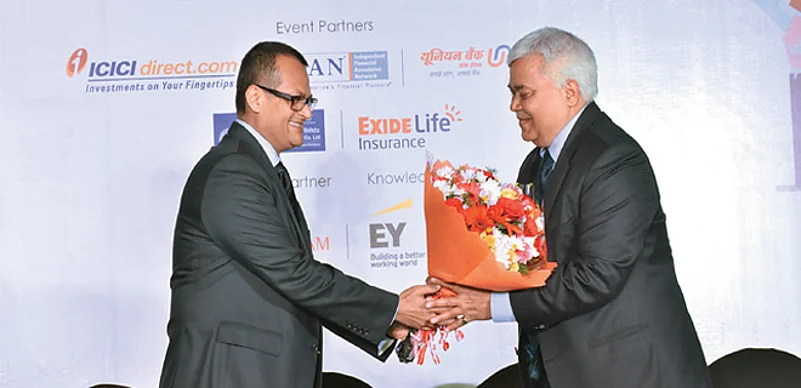Ram Sewak Sharma, Chairman, Telecom Regulatory Authority of India (TRAI), enthralled the audience with details of how digital financial inclusion was becoming a reality and how information technology was playing a very important role in simplifying the administrative processes in making life easier. He narrated his experience in using technology to simplify governance. “When we started doing Aadhar, we realised that one of the bottlenecks for inclusion of any type was the lack of identity for individuals,” he said. The voter ID was limited to adults and the problem was on creating an identity for every Indian, leading to Aadhar’s creation.
“We have the digital identity at a scale where 970 million people of this country have an identity which is unique and authenticable on a digital platform. This can be used across financial services; whether it is banks or insurance companies,” he said. Aadhar is a boon for the financial services industry—it absolves them from the responsibility of identifying a person because that job is done by Aadhar.

Sharma detailed how Aadhar was created even for people with no other ID and how they designed a system using technology to ensure that this identity was unique. And as Aadhar is a digital identity, it allowed one to participate in any transaction, thereby bringing in financial inclusion. He was of the view that the banking system had been slow in embracing a financial inclusion, to the extent it should have been.
The fallout of Aadhar and digital connectivity is that the bricks and mortar model is moving to a clicks and swipe model. “I think it is in the appropriate time that technology has come with the capability of scaling up the banking transactions and making it cost effective; and it has happened because of ubiquitous connectivity and digital identity. Therefore, it is possible today to do banking business in a sustainable manner,” he added.
More from Digital Dialogues, Bengaluru:














